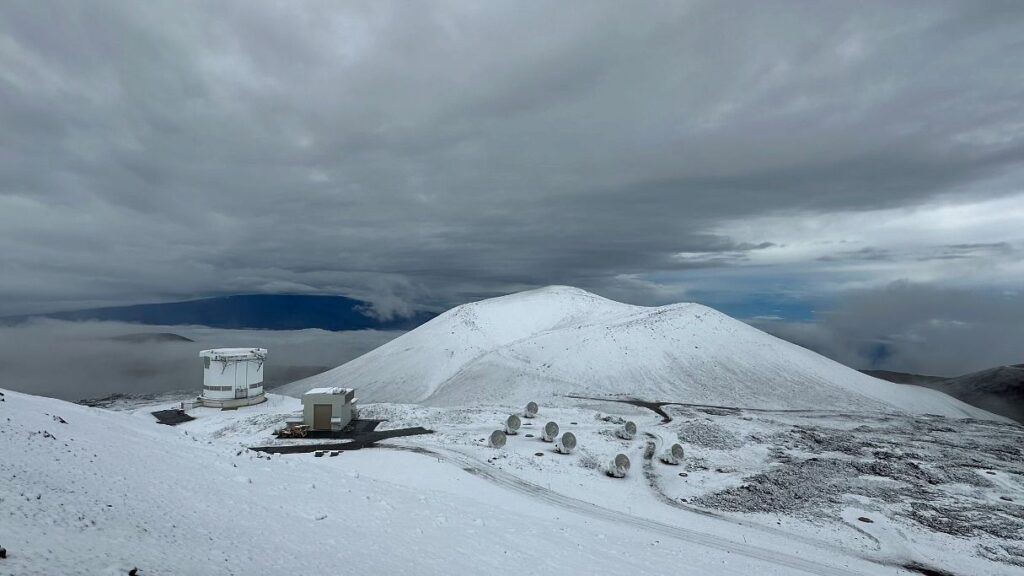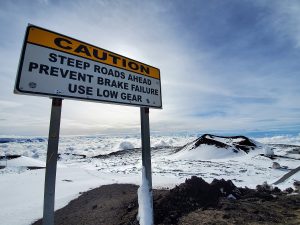
While the calendar says it is still autumn, portions of the Aloha State are being treated with a very early winter storm. The National Weather Service in Honolulu, Hawaii has issued a Winter Weather Advisory for the overnight hours for the Big Island summits of Mauna Loa and Mauna Kea on Hawaii Island. The Winter Weather Advisory is in effect until 6 am on Monday morning.
In addition to the Winter Weather Advisory, officials on the Big Island of Hawaii have also closed roads due to snow and ice. In an announcement earlier today, the Mauna Kea Rangers announced that the Mauna Kea Access Road is closed to the public at the Visitor Information Station located at the 9,200 feet level. With the Winter Weather Advisory in effect and more snow, ice, and fog in the forecast, authorities thought it’d be best to limit travel there.
According to the National Weather Service, deep moisture moving over the state of Hawaii will bring the potential for more snow and ice over the Big Island through tonight. Periods of snow, sleet, freezing rain, or a mixture of all is expected to leave a light glaze as wet surfaces drop below freezing tonight. Additionally, an additional inch or two of snow is possible there. With gusty winds, the National Weather Service also warns that blowing snow could be an issue here. “Travel could be very difficult,” the National Weather Service wrote into their Winter Weather Advisory, adding, “Blowing snow will significantly reduce visibility at times, with periods of zero visibility.”

A Winter Weather Advisory means that periods of snow, sleet, or freezing rain will cause travel difficulties. When this type of advisory is issued, the National Weather Services cautions those in the impacted areas to be prepared for slippery roads and limited visibilities while using caution while driving.
While most people don’t associate the tropical paradise Hawaii is known for with snow, they’re surprised to learn that it does snow in the winter due to the elevation of its volcanic peaks. Mauna Kea is the highest of the bunch at 13,803 feet. Maui’s Haleakala is much lower at 10,023 feet. Because of that difference, Hawaii Island will see snow more frequently than the lower Maui Island. Just one storm in January 2020 dropped 2-3 feet of snow on Hawaii Island and created snow drifts that were far deeper. Another storm in 2021 brought snowboarders and skiers out to the mountain by the dozens. Winter Weather Advisories were even issued last May when a late-season system brought wintry weather to Hawaii Island.